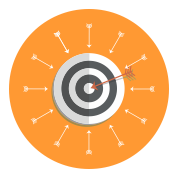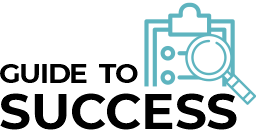The importance of Copy
Hey there, fellow scientific illustrator! Let's explore why copy is an essential ingredient for boosting your online presence and reaching your target audience effectively. So grab your favorite sketchbook, and let's get started!

First things first, what exactly is copy? In the realm of digital marketing, copy refers to the words, phrases, and sentences that accompany your visuals and communicate your message to your audience. It's the written content that you use to captivate, inform, and persuade your potential clients.
Now, you might be wondering, "Why is copy so important? Can't my stunning illustrations do all the talking?" Well, your illustrations are undoubtedly a powerful tool, but without compelling copy, they may not reach their full potential. Here's why:
Engaging storytelling:
Copy allows you to weave a compelling narrative around your artwork. By crafting captivating stories, you can make your illustrations come alive, triggering emotions and forging a connection with your audience. Whether it's describing the process behind your artwork or highlighting its significance in the scientific world, great copy enhances the impact of your visuals.
Clarity and context:
As scientific illustrators, your work might be complex and intricately detailed. Copy helps provide context, guiding your audience through the intricate details of your illustrations. It enables you to explain the scientific concepts, techniques, and ideas behind your artwork, ensuring that your audience understands and appreciates the depth and significance of your creations.
Search engine optimization (SEO):
When it comes to promoting your work online, copy plays a crucial role in improving your search engine rankings. By incorporating relevant keywords and phrases into your copy, you increase the chances of your website or social media profiles appearing higher in search results. This means more visibility and exposure for your illustrations, attracting the right audience and potential clients.

Building trust and credibility:
Copy allows you to establish your expertise and build trust with your audience. By providing informative and educational content, you position yourself as a knowledgeable authority in the field of scientific illustration. When people perceive you as a trustworthy source, they are more likely to engage with your work, share it with others, and even consider hiring you for their projects.
Call to action (CTA):
Effective copy includes clear calls to action, encouraging your audience to take the next step. Whether it's signing up for your newsletter, exploring your portfolio, or contacting you for a collaboration, a well-crafted CTA can guide your audience towards the desired action. It helps convert passive viewers into active participants, fostering meaningful connections and potential business opportunities.
Now that we understand the importance of copy in your digital marketing efforts, how can you make it shine? Here are a few tips to get you started:

1. Know your audience:
Understand who you're targeting with your illustrations and tailor your copy to their needs, preferences, and level of scientific knowledge. Speak their language and address their pain points to establish a strong connection.
2. Be concise and clear:
In the online world, attention spans are short. Craft your copy in a way that is easily digestible and gets your message across quickly. Use bullet points, headings, and short paragraphs to improve readability.
3. Inject personality:
Let your unique voice shine through your copy. Injecting your personality into your writing creates a memorable and relatable brand that stands out from the crowd.
4. Test and iterate:
Don't be afraid to experiment with different copy styles and approaches. Test different headlines, descriptions, and CTAs to see what resonates best with your audience. Analyze the data and make adjustments accordingly.
Remember, scientific illustrators, great copy is your secret weapon to amplify the impact of your stunning visuals.
The Importance Of Scientific Knowledge And Terminology
Let's explore why scientific knowledge and terminology are invaluable assets when it comes to crafting compelling content. So, put on your lab coats and grab your notebooks as we embark on this informative journey!
As scientific illustrators, you possess a unique advantage—your expertise in the field of science. This knowledge empowers you to create illustrations that are not only visually stunning but also accurate representations of complex scientific concepts. Now, imagine harnessing that same expertise in your copywriting efforts. Here's why it's crucial:
Establishing credibility:
When you incorporate scientific knowledge and terminology into your copy, you instantly establish yourself as a trusted authority in your field. Your audience recognizes that you possess an in-depth understanding of the subject matter, which lends credibility to your work. By demonstrating your expertise through your writing, you build trust and attract clients who value accuracy and precision.

Effective communication:
Science can be intricate and nuanced, but your ability to simplify complex ideas and communicate them clearly is a superpower. By leveraging scientific knowledge in your copy, you can break down intricate concepts into digestible pieces of information. This clarity allows your audience to grasp the significance of your illustrations and appreciate the intricate details that might otherwise go unnoticed.
Connecting with your audience:
Tailoring your copy to include scientific terminology shows that you understand your audience's language and can speak to them on their level. Whether you're targeting fellow scientists, educators, or science enthusiasts, using the appropriate scientific jargon helps you connect with them on a deeper level. It demonstrates that you share a common understanding and fosters a sense of belonging and trust.

SEO benefits:
Incorporating scientific terms and keywords into your copy can enhance your search engine optimization efforts. When potential clients search for scientific illustrations or related topics, having relevant scientific terminology in your content increases the likelihood of your website or social media profiles appearing in search results. This boosts your visibility, drives organic traffic to your platforms, and attracts an audience interested in your unique skill set.
Educating and inspiring:
As scientific illustrators, you have a passion for both art and science. Your copy can serve as a powerful educational tool, providing valuable insights and inspiring others to explore scientific subjects further. By integrating your knowledge into your writing, you can offer context, explain the scientific significance of your illustrations, and spark curiosity in your audience. This not only enriches their experience but also positions you as an advocate for science communication.
Now that you recognize the importance of scientific knowledge and terminology in your copy efforts, here are a few tips to maximize their impact:

1. Define and explain:
When using technical terms, ensure you define them or provide clear explanations within your copy. This helps bridge any knowledge gaps and ensures your audience can fully grasp your message.
2. Use analogies and metaphors:
Complex scientific concepts can be daunting for some. To simplify them, consider using relatable analogies or metaphors that make the ideas more accessible and relatable. This allows your audience to connect the unfamiliar with the familiar, aiding comprehension.
3. Avoid jargon overload:
While incorporating scientific terms is essential, avoid overwhelming your audience with excessive jargon. Strike a balance by using terminology that is relevant and necessary to convey your message effectively.
4. Collaboration is key:
If you're unsure about certain scientific details or terminologies, don't hesitate to collaborate with scientists or experts in the field. Their insights can enrich your copy and ensure its accuracy, adding another layer of trust and credibility to your work.
Conclusion
You have the power to create captivating illustrations and compelling copy that leave a lasting impression. By infusing your writing with scientific terminology, you connect with your audience, establish credibility, and educate and inspire others through your work.
The importance of hiring a Copywriter to plan a Persuasive Website

Let's comprehend the process of collaborating with a copywriter to plan a persuasive website that showcases your talent. Working together with a skilled copywriter can take your online presence to the next level, so let's explore how to make the most of this partnership. Get ready to bring your scientific illustrations to life through words!
1. Start with a shared vision:
Begin by discussing your goals and vision for your website with the copywriter. Explain the essence of your work, your target audience, and the message you want to convey. By aligning your visions, you lay a solid foundation for a persuasive and cohesive website.
2. Showcase your unique value proposition:
Your scientific illustrations set you apart, and the copywriter's job is to capture and convey that uniqueness. Collaborate with her to define your unique value proposition—the qualities that make your work exceptional. Together, you can craft compelling copy that highlights your skills, expertise, and what sets you apart from other scientific illustrators.
3. Identify your target audience:
A deep understanding of your target audience is key to creating persuasive copy. Work with the copywriter to communicate who your ideal clients are and what they seek. Are they researchers, educators, or publications? By understanding their needs, interests, and pain points, the copywriter can tailor the content to resonate with your target audience and capture their attention.

4. Develop a content strategy:
Crafting an effective website requires a well-structured content strategy. Collaborate with the copywriter to determine the key pages and sections you need. This may include an engaging homepage, an informative about page, a portfolio showcasing your best work, and a contact page. Brainstorm together to ensure the structure of your website supports your goals and engages visitors.
5. Communicate your brand voice:
Your brand voice is the personality that shines through your website. Share your desired brand tone with the copywriter—whether it's professional, friendly, authoritative, or anything in between. Discuss specific keywords or phrases that reflect your brand and align with your audience's expectations. This way, the copywriter can infuse your website with your unique voice, creating a consistent and engaging experience.
6. Craft compelling headlines and taglines:
Attention-grabbing headlines and taglines are essential to hook your audience. Work closely with the copywriter to create compelling, concise, and captivating headlines that draw visitors in. These headlines should encapsulate the essence of your work and spark curiosity, compelling visitors to explore further.
7. Collaborate on the portfolio descriptions:
Your portfolio is a showcase of your artistic brilliance, and the copy accompanying each piece is crucial. Collaborate with the copywriter to develop engaging and informative descriptions that provide context, explain the scientific significance, and highlight the unique aspects of each illustration. This collaboration ensures that the descriptions complement and enhance the visual impact of your artwork.

8. Incorporate persuasive calls to action (CTAs):
A website without effective CTAs may miss out on valuable opportunities. Together with the copywriter, determine the desired actions you want visitors to take—such as contacting you, requesting a quote, or exploring your services in-depth. Collaborate on crafting persuasive CTAs that guide visitors towards these actions and make it easy for them to engage with you.
9. Iterate and provide feedback:
The collaboration with the copywriter should be an ongoing process. Review drafts of the website content together, provide feedback, and share your thoughts openly. This iterative approach ensures that the copy aligns with your vision and effectively represents your unique style as a scientific illustrator.
10. Optimize for SEO:
Lastly, discuss search engine optimization (SEO) strategies with the copywriter. Identify relevant keywords and phrases that are important for your target audience. By incorporating these into the website copy, you increase the visibility of your website in search engine results, making it easier for potential clients to discover your incredible work.
Conclusion
Remember, collaboration with a copywriter is a dynamic and creative process. Together, you can create a persuasive website that not only showcases your scientific illustrations but also captivates your audience and compels them to engage with your talent. So, embrace the collaboration, communicate your vision, and let the words and visuals harmoniously tell your story!
Finding The Ideal Copywriter
When it comes to finding the ideal copywriter for your website, it's important to choose someone who understands your unique blend of art and science.
Copywriters directories serve as valuable resources for finding a good copywriter. These directories compile profiles of skilled copywriters, allowing you to browse through a curated list of professionals with diverse backgrounds and areas of expertise.

By exploring the directories, you can easily access information about their experience, writing style, portfolio samples, and client testimonials, giving you a comprehensive overview of their capabilities. This centralized platform streamlines the search process, saving you time and effort in finding a copywriter who aligns with your specific needs and requirements.
I highly recommend checking out the services offered by Copywriting.com! They are a very good platform that connects you with top-notch copywriters who excel in their craft. Whether you're in need of persuasive website copy, compelling blog posts, captivating social media content, or any other written material, Copywriting.com has got you covered.
Their team of skilled copywriters possesses a diverse range of expertise, ensuring that you'll find the perfect match for your project. With a focus on delivering high-quality, engaging, and results-driven copy, their writers are dedicated to helping you effectively communicate your message and achieve your goals.
Now, let's explore some tips to help you find the ideal copywriter who can bring your scientific illustrations to life through words.
Seek relevant expertise:
Look for a copywriter with experience in the creative and scientific fields. Someone who has worked with artists, designers, or scientific organizations can bring valuable insight to the table. Check their portfolio or website to see if they have previously written for scientific topics or creative industries. Their familiarity with the intersection of art and science will ensure they grasp the nuances of your work.
Review their portfolio:
A copywriter's portfolio is a treasure trove of their skills and capabilities. Take the time to review their previous work. Pay attention to the tone, style, and versatility of their writing. Do their samples resonate with you? Are they able to adapt their writing to different audiences? Look for evidence of their ability to craft engaging and persuasive content that aligns with your vision.

Request testimonials and references:
Don't be shy about asking for testimonials or references from their past clients. Reach out to those clients to get insights into the copywriter's professionalism, communication, and ability to deliver results. Feedback from others who have collaborated with the copywriter can give you a clearer picture of what it's like to work with them.
Assess their understanding:
During the initial discussions, gauge the copywriter's understanding of your work, audience, and goals. Are they genuinely interested in learning about your scientific illustrations? Do they ask insightful questions to gain a deeper understanding of your unique value proposition? A copywriter who takes the time to understand your work and target audience is more likely to create impactful copy that resonates with your clients.
Communication and collaboration:
Effective communication is key in any collaboration. Pay attention to the copywriter's responsiveness, clarity, and ability to listen to your ideas. A good copywriter will collaborate closely with you, seeking your input and incorporating your feedback to create copy that truly represents your vision and goals. Look for someone who values open and constructive communication.

Discuss timelines and availability:
It's crucial to find a copywriter who can align with your project's timeline. Share your expectations and discuss their ability to deliver within the desired timeframe. Keep in mind that creating compelling copy takes time and revisions, so allow for a realistic schedule that ensures the quality and attention your project deserves.
Discuss budget and terms:
While the perfect copywriter may not necessarily be the cheapest option, it's important to discuss your budget and ensure that it aligns with their rates. Be transparent about your financial expectations and inquire about their pricing structure. Remember, investing in high-quality copy is an investment in your professional image and can yield long-term benefits.
Trust your instincts:
Lastly, trust your instincts. Chemistry and compatibility are essential in any collaborative relationship. If you have a positive gut feeling about a copywriter, it's a good sign that they may be the perfect fit for your project. Trust your intuition and select the copywriter with whom you feel the most comfortable and confident.
Conclusion
By following these tips, you'll be well on your way to finding the perfect copywriter who can skillfully translate your scientific illustrations into persuasive and captivating words. Together, you'll create a website that not only showcases your talent but also engages and inspires your target audience. So, get ready to embark on this exciting journey and discover the copywriter who will elevate your online presence to new heights!
Module Conclusion
As we conclude Module 3, "Building an Engaging Website," you now grasp the significance of a professional website to bolster your online presence. You can now use your Guide To Success to create a plan for your website and confidently outline your website's goals and objectives.

You understand the visual and persuasive elements necessary to inspire your target audience to engage and reach out through your website.
Furthermore, you're well-prepared to identify the keywords crucial for optimizing your website's search engine visibility. Lastly, you've gained insight into what to anticipate when collaborating with a web designer and a copywriter, ensuring seamless and productive cooperation.
